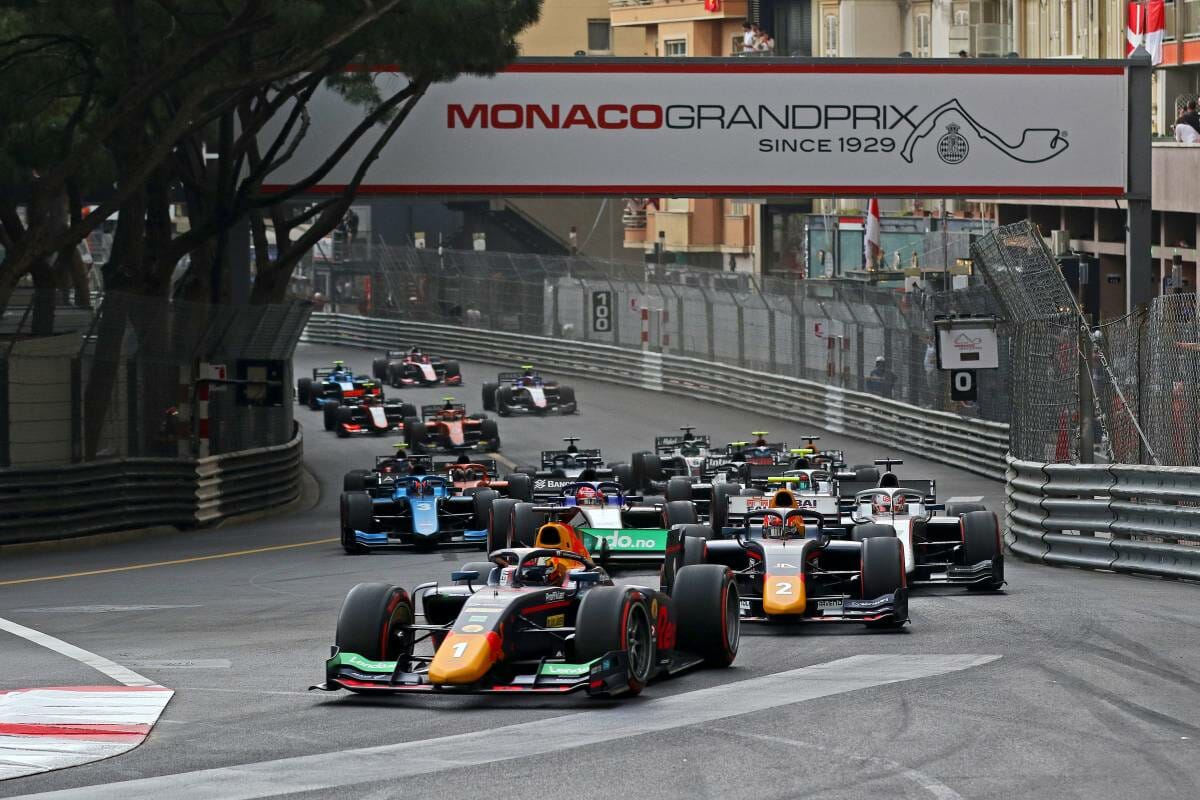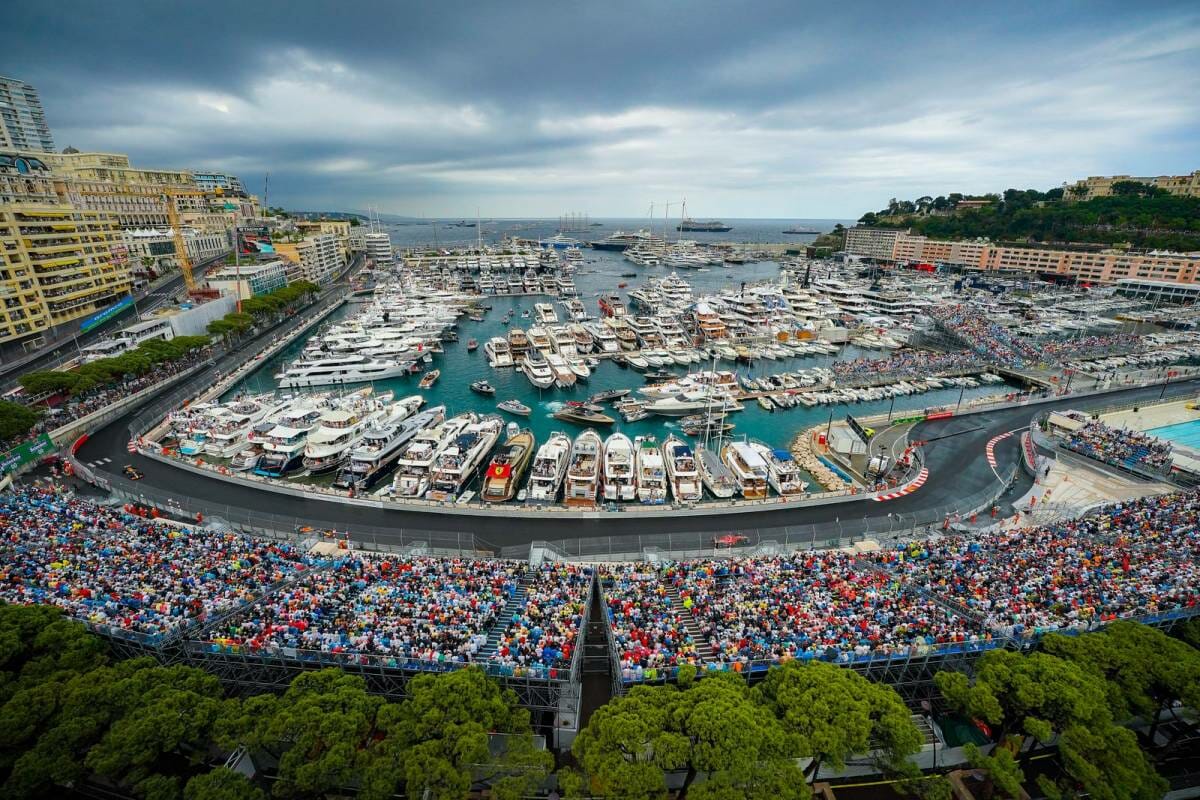Today the Monaco Grand Prix is one of the most eagerly awaited races in the Formula-1 calendar. Its challenging circuit winds through the Monte-Carlo streets. Monaco residents are booking their seats in advance to get the best views and, of course, to cheer for the Monegasque Charles Leclerc, the Formula-1 vice-champion last season. The start of the legendary Monaco Grand Prix, however, is associated with many challenges and obstacles that may have compromised the very addition of this unique circuit to the Formula-1 calendar.
How it all started
The Monaco Grand Prix was founded by the predecessor of the modern day FIA, the French Association of Recognised Automobile Clubs, that opened its headquarters in 1904 in Paris. In 1925, it was approached by the Monegasques with the purpose of registering the Automobile Club of Monaco. The request was, however, rejected. According to the French Association, it was thought inappropriate to register an entire club in a tiny state that does not even hold a race of its own.
But the avid car enthusiasts, Antony Noghès and his son Alexandre, just wouldn’t take “no” for an answer. They came up with a project of running a race directly through the Principality streets, with no need to build any extra tracks. Having pondered on the pros and cons of making a racetrack in the Principality for two years, Antony Noghès eventually entrusted his project to the only professionals he knew would give him relevant and objective advice. They were the racer Louis Chiron and the technician Jacques Taffet. Very importantly, he also got the support of Prince of Monaco, Louis II. On top of that, Antony had to persuade the Société des Bains de Mer to back him with their investments. Realizing its potential, SBM manager, René Leon, unwaveringly allocated the funds in question.

The very first Grand Prix race
The first race in the Principality took place on 14th April, 1929. 15 cars were competing: 8 Bugatti, 3 Alfa Romeo, 2 Maserati, 1 Licorne and 1 Mercedes SSK.
It was famously won by William Grover-Williams at the wheel of his Bugatti Type 35B. The champion was awarded a prize of 100,000 French francs by Prince Louis II of Monaco in person. William Grover covered the entire distance in 3 hours 56 minutes 11 seconds at an average speed of 80 km/h. And the beautiful tradition of receiving your reward personally from the sovereign has been preserved to this day.
The race was originally part of the European Championship held before the Second World War. The Monaco Grand Prix gradually became as popular as other races across Europe. In 1933, its scale and audience were equivalent to those of France, Belgium and Spain. What’s more, that year for the first time the starting position was determined by the practice sessions results. This selection still works to this day.

Over the next few years the Grand Prix races were an absolute must-see. Sadly, this short-lived success was overtaken by the war, with the races suspended from 1939. After the end of World War II, the Grand Prix was re-launched on September 9, 1945 in Paris. However, due to its dire financial situation, Monaco was not among the participants until 1947. In 1949 the Monaco Grand Prix was cancelled again due to the passing away of Prince Louis II.
The first Formula-1 Monaco Grand Prix was held in May 1950. Unfortunately, further delays and cancellations followed due to various technical problems, and it was not until 1955 that Monaco rejoined the F1 World Championship. In 1956, shortly after her marriage to Prince Rainier, the Grand Prix race was opened by Princess Grace herself.

More attention to safety
The Grand Prix kept expanding with more countries increasingly joining the world championship. In 1960 barriers were introduced at various points of the track. Prior to the introduction of these safety measures, racers were running the danger of steering off the track and hitting a wall, a pole, or even falling into the water. This may sound incredulous by today’s standards, but safety protocols had yet to be perfected. The cars of the time were not as fast as today, but much less safe.
The innovations above significantly altered the race track appearance. As safety conditions improved, the organisers were willing to increase the number of cars allowed. So, in 1972 it went from 18 to 26. Just two years later, however, this number was brought back to 18.
The Monaco circuit is renowned for its compact size, and consequently, the average speed for the racers has always been slower. The shortest, narrowest and slowest, it is also the most dangerous race in the championship. The Monte-Carlo challenging hairpins, where overtaking is impossible, require maximum concentration.

Grand Prix 2023
This year we will be celebrating the 80th Monaco Grand Prix. The race has remained part of the Formula-1 calendar despite some fears and talks that it may be removed. In 2023 the racing championship will count a record 24 races.
The race will thus be held in China for the first time since the coronavirus pandemic. It will then travel to Qatar, Monaco and Las Vegas, followed by Austin and Miami. Thus this season will see the introduction of new circuits, honouring at the same time the historic ones.
The Monaco Grand Prix will be held from May 25 to 28. By now, it has maintained its city racetrack tradition since 1929, invariably delighting its fans and television audiences around the world. Unsurprisingly, the Principality is well packed on its Grand Prix days. Celebrities and motor sports enthusiasts from all around the globe flock to the circuit.
But it’s not just the Grand Prix racing that makes Monaco famous. Following three days of intense competitions, the Principality hosts the most prestigious parties of the year, attracting Formula-1 racers and their fans.
Planning to spend a Grand Prix weekend in Monaco? Start exploring the various options now: from the most exclusive and expensive to the budget one. Book your tickets, choose the most advantageous views of the track. Let’s start looking forward to the legendary race and get ready for more incredible stories and spectacular records as the racers continue to write the history of the unique Monaco Grand Prix circuit here in Monaco!

AMAZING FACTS ABOUT THE MONACO GRAND PRIX
– The very first winner of the Monaco Grand Prix was … a spy
William Grover, who drove his Bugatti to victory during the very first Monaco Grand Prix, was a World War II spy for the British intelligence service in France. Sadly, arrested by the Nazis at the end of the war, he was executed in Sachsenhausen concentration camp in 1945.

– As easy as riding a bicycle
Fancy a cycle race around your own living room. It requires utmost concentration, precision, control and skill. That’s how Brazilian racer Nelson Piquet describes his racing experience. By the end of the race, the competitors would have made almost 5,000 gear changes around countless bends!
– Jumping into the water
The Mediterranean Sea is not just a beautiful background for the Monaco Grand Prix. Racers would sometimes find themselves careering overboard. According to the MotorSport magazine of 1965, Paul Hawkins hit the wooden barrier at the port side chicane entrance, flew over bales of straw and the edge of the quay, ending up straight in the sea. His Lotus sank, but the hardy Australian luckily surfaced and swam ashore. The rescue boats finished the job.
They do say that lightning never strikes the same place twice. However, ten years earlier, in 1955, Alberto Askari did the same very thing. Fortunately, the Italian pilot escaped with some nose injuries and a slight concussion.
– “The big pandemonium”
Did you know that the legendary Fangio miraculously escaped a dip in the sea on the day of his first win in 1950? The quirky winds from the Mediterranean were to blame. Italian Nino Farina, the winner of the very first World Championship in 1950, at the end of the first lap due to the humidity of the track, made a mistake and collided with the Argentinean Gonzalez, thereby provoking a blockage of more than half of the riders. Fangio carefully drove around without colliding and won the race without any fight. Call it lucky. Either way, having won the Monaco Grand Prix four more times, Fangio has dispelled any doubts as to his virtuoso driving skills.
– The highest number of victories and the smallest winning margins
A record for number of victories at the Monaco Grand Prix — six — belongs to the Brazilian Ayrton Senna called the “King of Monaco”. Senna also had a major opportunity to win in 1984 at the famous rainy Grand Prix when the race was stopped and Alain Prost was declared the winner.
Another of Senna’s records is the smallest margin of victory recorded in 1992. Senna beat Nigel Mansell by just 0.215 seconds and won the Monaco Grand Prix for the fifth time, equalling Graham Hill, who was called “Mr. Monaco”. The British pilot earned this nickname for five victories on the streets of Monaco between 1963 and 1969. In 1965, an interesting incident happened to Hill: in order to avoid a collision with Bob Anderson, Graham Hill had to abruptly change the trajectory and drive into a pocket on the track. He jumped out of the car, pushed it back onto the track, jumped back into his driving seat and continued the competition. Even such a serious loss of time did not prevent Graham Hill from finishing the race first.
The second five-time winner of the Monaco Grand Prix is Michael Schumacher. Alain Prost has got four victories.
– Pole position
Does an advantageous pole position actually guarantee victory? In a race through the narrow streets as in Monaco its role is major indeed. 12 out of the last 18 races in Monaco were actually won from the pole position. Whichever way it is, you can’t really bet everything on it. Overall, out of 79 Monaco Grand Prix, the pole position has been a winning one in just over 50 % of the time.
Do you think it’s possible to become a Grand Prix champion if you’re not even in the top-10? In 1996 Olivier Panis, the winner of the race, was a mere 14th on the starting grid. Only three cars even managed to cross the finish line after that mechanically-challenged race. Panis’ ranking is the lowest ever recorded for a Formula-1 winner.
From Chiron to Leclerc
In 1931, Louis Chiron was the first ever man from the Principality to win the Monaco Grand Prix. Sadly, his victory wasn’t welcomed with the chequered flag that year, and he didn’t become the symbol of the race until 1933. Let’s hope Monegasque Charles Leclerc, one of Formula-1’s youngest drivers, will have the joy and privilege to be saluted under the chequered flag for his first home victory.

As for the title of the oldest competitor, it also belongs to Louis Chiron, having raced in the 1955 Monaco Grand Prix at the age of 55 years, 9 months and 10 days.

A TRICKY CIRCUIT
Even if Monaco is the only one not to meet the FIA minimum distance of 305 kilometres, its Grand Prix has well earned its place amongst the other F1 destinations, invariably capturing the hearts of its numerous fans and car enthusiasts.
A 180-degree hairpin surprising the racer from the straightaways at top speed is truly magical. Pilots have to decelerate from full throttle of 200 km/h to 45–50 km/h in 7.5 seconds. They only have a fraction of a second to make a decision to overtake their rival.
No less difficult for pilots is the passage of the Tunnel — both because of the difference of temperatures of asphalt and of the sudden change in lighting, to which the human eye cannot adapt instantly. The tunnel in Monte-Carlo is the only one in Formula 1 and the fastest part of the lap of the Monaco Grand Prix (up to 260–300 km/h).
Interestingly, the basic configuration of the circuit has remained unchanged since 1950, while Grand Prix tracks in other countries have undergone major changes over the years. It wasn’t until 2015 that Monaco also made, even if minor, changes. The circuit was shortened by a total of 3 metres, namely three corners (#12, #13 and #14) and now is equal to 3.337 km.

Since 1979, the last corner of the Monaco circuit just before the finish line has borne the name Antony Noghès Virage. This is to honour the man who did not back down and pushed for this legendary race to be included in the international championship calendar.









